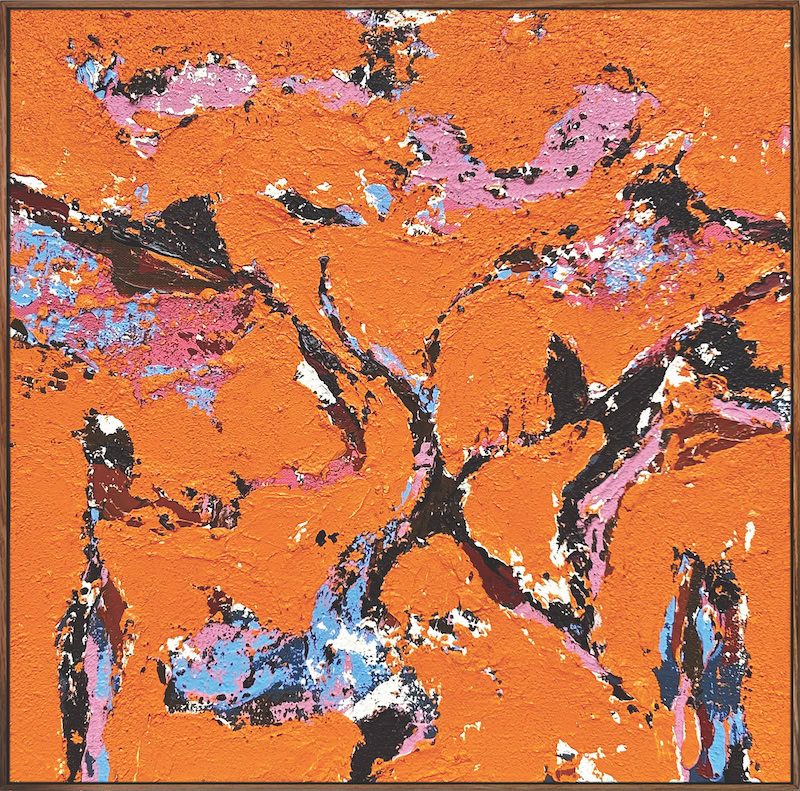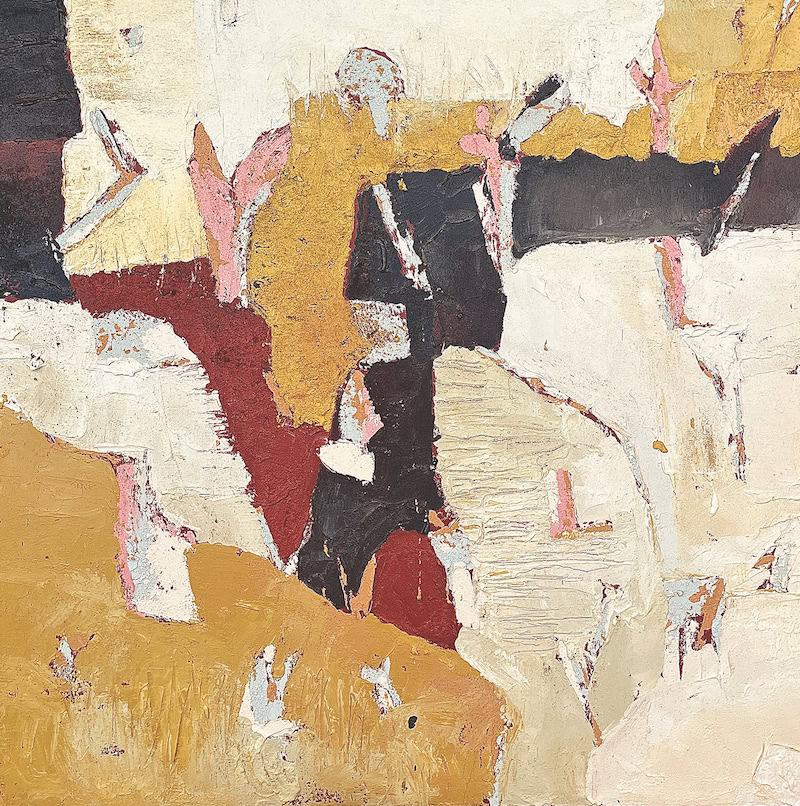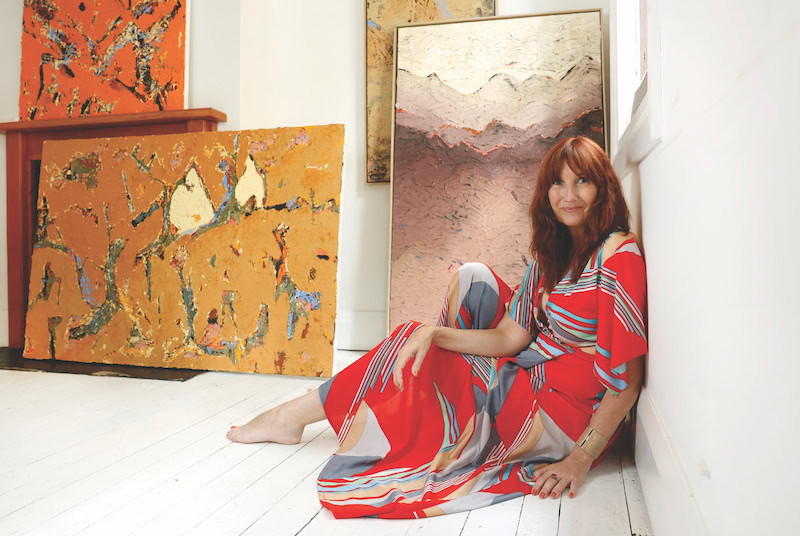We often see the medium of painting as fundamentally flat and static, providing its audience a threshold through which they can view a scene or concept. It is to be considered from afar, possibly from behind museum- grade glass or a velvet rope. But even the most respectful connoisseur often yearns to feel the texture of paint and canvas – to be invited into the world of the artist, to feel what they have been compelled to say.
Sydney and Central Coast-based artist Tara Johns seeks to bridge this gap between audience and artwork, uprooting preconceptions about what the function of a painting should be. “I often find people compelled to want to touch my work”, she says, “and I am happy for people to experience them in this way”. The artist regularly incorporates clay and soil she collects into her acrylics, letting the texture of the land puncture the paint. “I invite people to feel the textures of the clay and then ask how it made them feel, and what they saw”.
This open approach to the senses in the context of appreciating art comes from an intimate understanding of the variability of perception. The artist has suffered from a rare neurological disorder, one that has required surgery on multiple occasions, and has resulted in profound changes in how she experiences the world. Johns was extended a special invitation to share her insights and experiences through an artist talk at the Art Gallery of NSW in 2023, and more recently at the Broken Hill
art exchange in regional NSW where she spoke on the intricate relationship between her heightened sensory awareness and her unique art practice.
However, this has not diminished her practice, but has instead fostered a new understanding of how art can be appreciated. “We all see things differently and respond to stimuli in a multitude of ways”, says Johns, “what was unimaginably terrifying has slowly paved the way for a whole new way of seeing.”
The Australian landscape is Johns’ main muse, the artist regularly immersing herself within it near Copacabana on the Central Coast – seeing, hearing and feeling the natural world. She describes it as “listening to a landscape as if one is listening to an orchestra refracted through our senses”. This experiential approach is integral: “this method of working, low to the land, feels very grounding for me – anchors me.” She then translates these impressions to canvas, abiding by a strict regimen of creative production. The result of this are works that mean something different for every viewer. They are a translation of an experience, of being within nature, which are then experienced again by Johns’ audience – rather than just viewed. The dense ochres of the earth, the rise and fall of the land, and the very feel of the ground beneath the artist’s feet all find expression through these works. Johns leads her audience through the bush, and what they find there is entirely their own.
Above: Artist Tara Johns with a selection of her paintings. Photo: Richie Dobson. Courtesy: the artist.

Tara Johns, Memories of a Landscape, 2023. Impasto acrylic with earth and clay on canvas, 113 x 153cm.

Tara Johns, Tangerine Dream, 2023. Impasto acrylic with artists own mix of clay and earth, 91 x 91cm.

Tara Johns, Red Cliffs, 2024. Earth and clay mixed with impasto and acrylic on canvas, 101 x 101cm.

